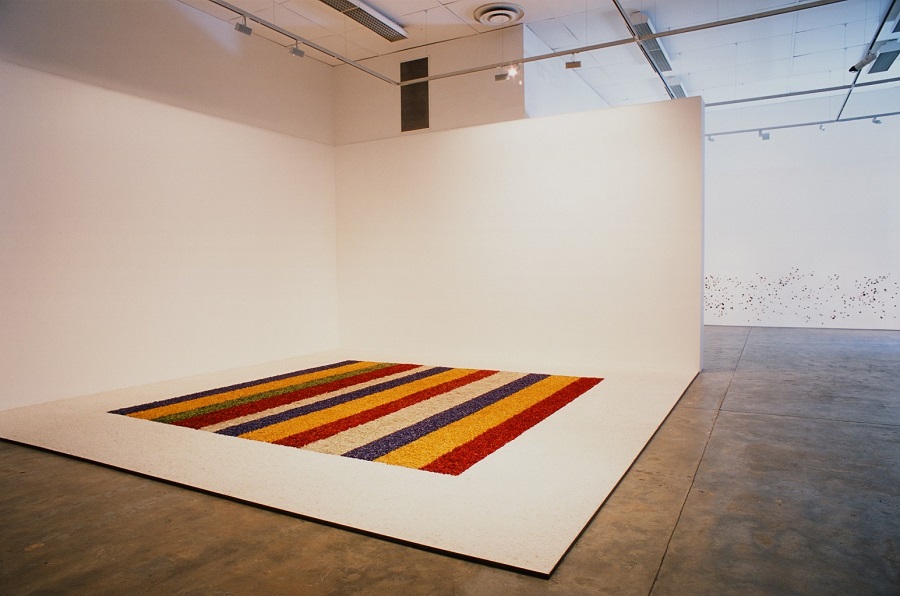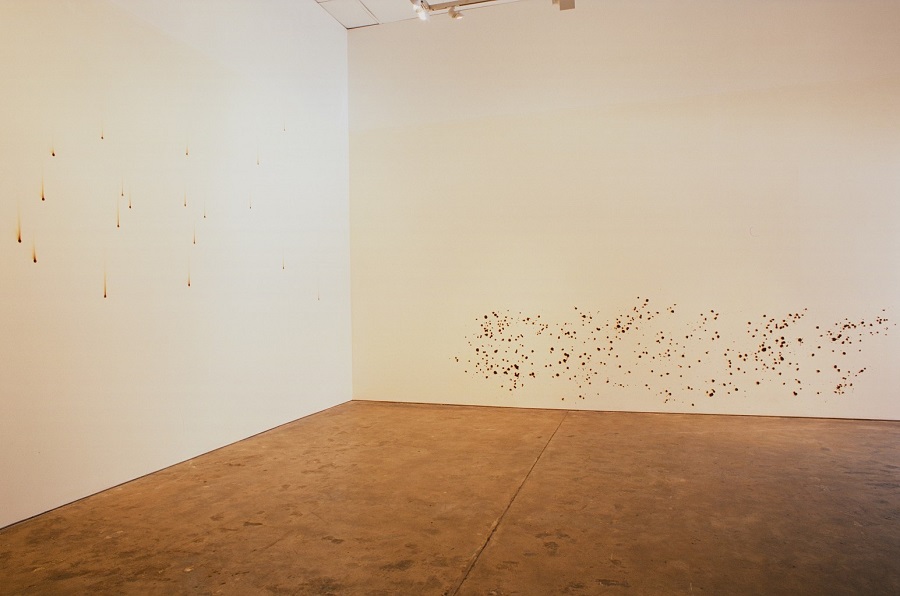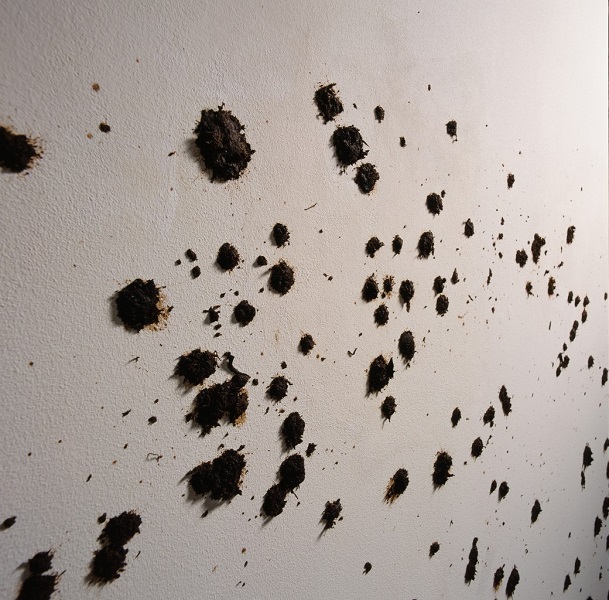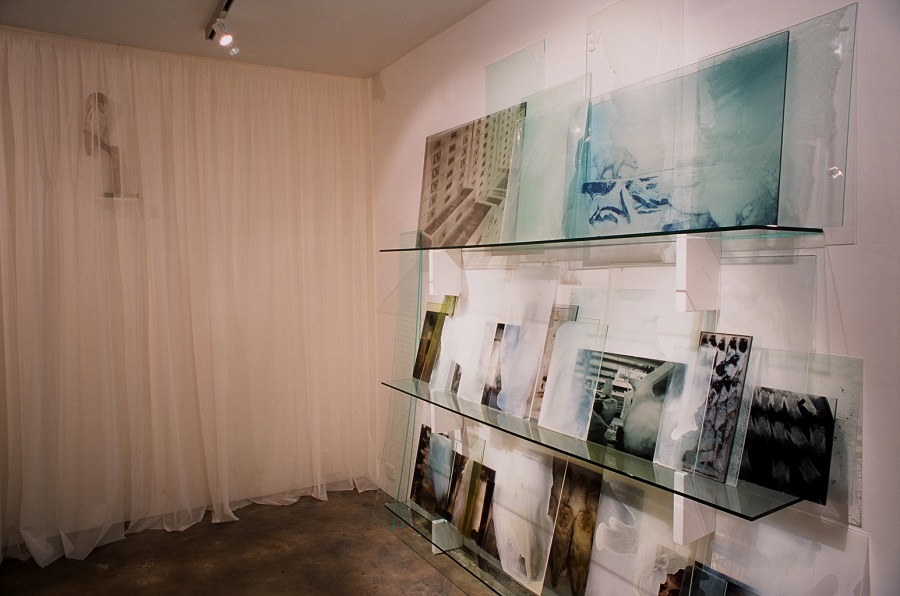2002 - Eden and the Apple of Sodom
Eden and the Apple of Sodom / 28 February — 6 April 2002
Image: solanum linnaeanum/Apple of Sodom, from Eden and the Apple of Sodom catalogue, concept by Erica Green, photography by Grant Hancock and digital manipulation by David Zhu; Lauren Berkowitz, University of South Australia Art Museum.
Lauren Berkowitz, Antony Hamilton and Janet Laurence – artists whose practices engage with the environment in distinctive and fascinating ways – have been commissioned by the University of South Australia Art Museum to each create a new, major work for the exhibition Eden and the Apple of Sodom.
These renowned and exceptionally inventive artists have responded to broadly suggested themes of ecologica lsustainability and the environment. The exhibition consists of three discrete installations, each employing uniquely differen tsensibilities, yet resonating and intersecting with one another at a variety of levels, creating a powerful physical and sensory presence.
The exhibition is an independent initiative of the Art Museum, funded by the University. However, curator Erica Green says she is delighted that the project has been embraced by the Adelaide Festival, pointing to the festival's importance as a partner for large projects. "We had extremely successful collaborations with the Festival in 1998 and 2000", she says, "with the result that Adelaide audiences got to see ambitious international visual arts projects which would not otherwise have been possible". "With a new, state–of–the–art University Art Museum gallery currently in its planning phase, we hope to be in a position – at future festivals– to showcase the very best Australian and overseas art".
Building on one of the themes originally proposed by former Festival director, Peter Sellars, Eden and the Apple of Sodom endeavours to heighten awareness and appreciation of our vulnerable and sensitive environment, a "future shock" issue affecting us all, but which is still to register in our minds with th eurgency it warrants. Nowhere is this issue more manifest than in the arid landscapes and river systems of southern Australia.
Eden and the Apple of Sodom is also richly laden with archetypes and the stuff of biblical mythology: the exhibition title deliberately invokes the primordial vision of earthly paradise and God's later retribution for human wickedness and recalcitrance.
A curatorial starting point for the exhibition was provided by an exotic plant species listed in the Sydney of 1802 – Apple of Sodom, (Solanum linnaeanum) – one of the earliest introduced plants identified in the colony and now, in 2002, a weed found growing throughout Australia. (The common name refers to the ancient city of Sodom, where it is claimed there were certain plants which produced an extremely bitter, but attractive looking fruit). Weeds are the number one land degradation problem in Australia, one of many looming environmental crises we face. God's retribution, perhaps.
Eden, another image rich in biblical mythology, is also a persistent contemporary idea. It is a vision fundamentally of beauty, order and ease, which exemplifies our most persistent collective longings and utopian dreams. And perhaps also, our deepest guilt and fears.
A University of South Australia Art Museum exhibition. Curated by Erica Green. Catalogue essays by Erica Green, George Alexander, Rachel Kent, and Russell Smith.

Image: Lauren Berkowitz, Colour Field, 2002, salt, weeds: Patterson’s Curse/Salvation Jane, English Broom, Spanish Broom, Bridal Creeper, Olive, Bulbil Watsonia, Montbretia, Pampas Grass, Three-cornered Garlic/Angled Onion, White Flowered Fumitory, Quaking Grass/Blowfly Grass, 2.5 x 600 x 600 cm, University of South Australia Art Museum.

Image: Antony Hamilton, Untamed - vivid scenes from a famous American border town, 2002, 'Corona’ cigar smoke, American chewing tobacco, porcelain soup bowl and cigar, 2 walls, 400 x 660 cm and 400 x 790 cm and bowl, installation view, University of South Australia Art Museum.

Image: Antony Hamilton, Untamed - vivid scenes from a famous American border town, 2002, 'Corona’ cigar smoke, American chewing tobacco, porcelain soup bowl and cigar, 2 walls, 400 x 660 cm and 400 x 790 cm and bowl, detail, University of South Australia Art Museum.

Image: Janet Laurence, Fugitive in light, 2002, duraclear photographs, glass, acrylic, voile, oil, oxides, ash, marblo, natural science specimens and projected images, dimensions variable, University of South Australia Art Museum.